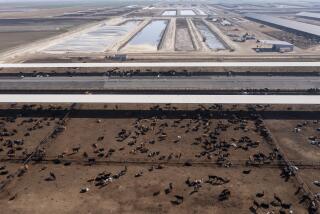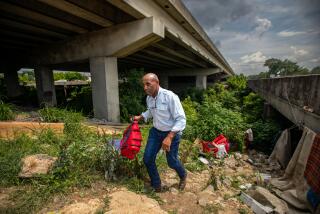Rural Poor--Their Numbers Grow
- Share via
The rural poor are too often the forgotten poor. For many Americans, talking about poverty now means talking about the inner-city welfare mother. Yet poverty rates actually are almost equal in the countryside and the cities. This misperception means that the rural poor are frequently either left out of programs aimed at helping the impoverished or inadequately served.
A major new report by the Center on Budget and Policy Priorities seeks to draw a clearer picture of rural poverty and to point policy-makers toward steps to ease that poverty. The report, by the center’s research director, Kathryn H. Porter, shows that not only is poverty high in rural areas, it also has been growing as much in those areas as it has in the cities since the late 1970s. The report also challenges the assumption that the rural poor live on farms when in fact fewer than 10% do.
When one looks at the poor, one sees a predominance of certain groups: blacks and other minorities, families headed by single women, children and the elderly. The poverty rates for these impacted groups are higher in rural areas than in central cities. For example, more than 44% of blacks living in non-metropolitan areas were poor in 1987 compared to 33% of blacks living in central cities.
The 17 Southern states have the highest rural poverty rate--22%--and certainly the highest rate of poverty among rural black residents. The researchers were unable to generate separate state-by-state poverty figures, so it is not possible to judge where California stands. But the West in general had the next highest poverty rate after the Southern states.
It is important to remember that, in absolute numbers, there are still more poor people in cities because more people live in cities in general. There are, then, 13.9 million city dwellers who are poor and 9.1 million rural poor.
But why is there so much poverty in rural areas? The center’s next report will go into that question, but its director, Robert Greenstein, shed some light on the issue in congressional testimony earlier this month. In many cases, he said, poor people who live in the countryside are poor despite the fact that they work full time. They simply don’t earn enough money to stay above the poverty line, which in 1987 was $9,056 in annual earnings for a family of three. Seven out of 10 heads of poor rural families worked during 1987 and more than five out of every six family heads of two-parent families worked during the year. In many rural families, other people work as well and yet they remain impoverished. The poverty rate for rural working families is in fact double that of urban working families.
“This means that in rural America--to an even greater degree than in urban America--work provides no assurance that a family will not be poor,” Greenstein told the House Select Committee on Children, Youth and Families. “When a family head works full time year-round but the family remains poor, the cause of its poverty is clear--low wages. Wage and earnings levels are considerably lower in rural than in urban areas,” Greenstein said, adding that earnings for rural workers fell faster than those of urban workers during the recession between 1979 and 1982 and then didn’t recover as quickly as those of urban workers. Adjusting for inflation, rural workers earn less now than they did in 1979.
Increasing the minimum wage and expanding the earned income tax credit are steps that would help the poor wherever they live, but Greenstein testified that those steps might have particular impact on the rural poor. Greenstein also suggested making the tax credit for dependent care refundable for families that make too little money to owe income tax. In addition, the working poor need better health-care coverage and help in finding adequate and affordable child care.
All these steps are being debated now in Congress. The policy-makers have been reminded that poverty has not disappeared from rural American life. The only thing that has disappeared has been public attention, coupled with these steps to put more money into the pockets of the rural poor. There is no longer any excuse for confusion over the issue or inaction in trying to solve it.


